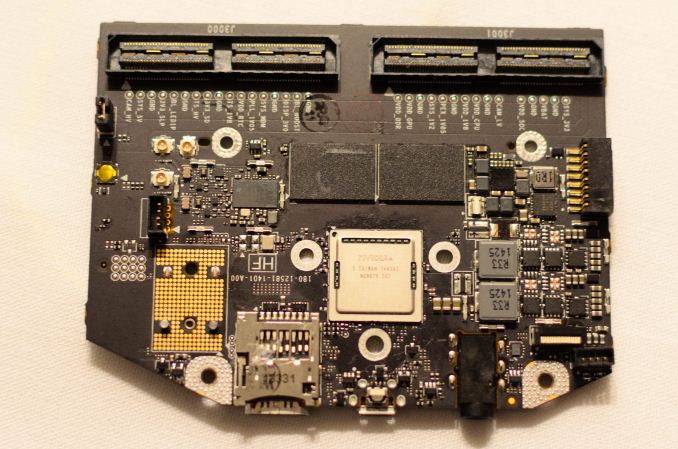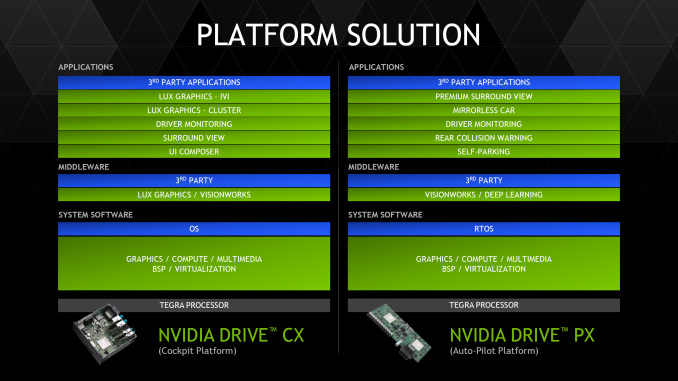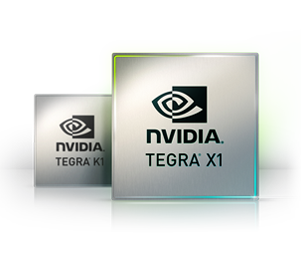NVIDIA Tegra X1 Preview & Architecture Analysis
by Joshua Ho & Ryan Smith on January 5, 2015 1:00 AM EST- Posted in
- SoCs
- Arm
- Project Denver
- Mobile
- 20nm
- GPUs
- Tablets
- NVIDIA
- Cortex A57
- Tegra X1
Final Words
With the Tegra X1, there have been a great deal of changes when compared to Tegra K1. We see a move from Cortex A15 to A57 on the main cluster, and a move from a single low power Cortex A15 to four Cortex A53s which is a significant departure from previous Tegra SoCs. However, the CPU design remains distinct from what we see in SoCs like the Exynos 5433, as NVIDIA uses a custom CPU interconnect and cluster migration instead of ARM’s CCI-400 and global task scheduling. Outside of these CPU changes, NVIDIA has done a great deal of work on the uncore, with a much faster ISP and support for new codecs at high resolution and frame rate, along with an improved memory interface and improved display output.
Outside of CPU, the GPU is a massive improvement with the move to Maxwell. The addition of double-speed FP16 support for the Tegra X1 helps to improve performance and power efficiency in applications that will utilize FP16, and in general the mobile-first focus on the architecture makes for a 2x improvement in performance per watt. While Tegra K1 set a new bar for mobile graphics for other SoC designers to target, Tegra X1 manages to raise the bar again in a big way. Given the standards support of Tegra X1, it wouldn’t be a far leap to see more extensive porting of games to a version of SHIELD Tablet with Tegra X1.
NVIDIA has also made automotive applications a huge focus in Tegra X1 in the form of DRIVE CX, a cockpit computing platform, and DRIVE PX, an autopilot platform. Given the level of integration and compute present in both DRIVE CX and PX, there seems to be a significant amount of value in NVIDIA’s solutions. However, it remains to be seen whether OEMs will widely adopt these solutions as car manufacturers can take multiple years to implement a new SoC. Compared to the 3-4 month adoption rate of an SoC in a phone or tablet, it's hard to pass any judgment on whether or not NVIDIA's automotive endeavors will be a success.
Overall, Tegra X1 represents a solid improvement over Tegra K1, and now that NVIDIA has shifted their GPU architectures to be targeted at mobile first, we’re seeing the benefits that come with such a strategy. It seems obvious that this would be a great SoC to put in a gaming tablet and a variety of other mobile devices, but it remains to be seen whether NVIDIA can get the design wins necessary to make this happen. Given that all of the high-end SoCs in the Android space will be shipping with A57 and A53 CPUs, the high-end SoC space will see significant competition once again.













194 Comments
View All Comments
MrPoletski - Monday, January 26, 2015 - link
I can't help but think the reason that this all happened at all is because of AMD and Mantle.maskofwraith - Monday, March 2, 2015 - link
if OpenGL is FAR outdated and a mess then why are they still supporting it? why dont they try to contribute it to it, to make it better? Wait they cant do that all they need is money. half of the internet runs on opensource.GC2:CS - Monday, January 5, 2015 - link
Why ?They do incredibly well on graphics font.
Mondozai - Monday, January 5, 2015 - link
Everyone who thinks that the X1 is going to crush all the competition is going to get burned once more, just like with K1. OEMs want an integrated solution. Yes, Nvidia has awesome GPU capabilities(duh) but that in of itself isn't enough. Still doesn't have an integrated modem, so the smartphone market is dead on arrival.Tablets have a better shot, but Nvidia is aiming for the car market for a reason. There may be a few one-off devices that they will aim for but overall, this isn't going to be a significant force in the high-end tablet space. S810 has the GPU capability to run 4K smoothly.
Apple's next GPU is going to be a lot better, just like every year. Can Nvidia compete on a 'total system basis'? The answer remains as it has always been: no.
speculatrix - Monday, January 5, 2015 - link
Nvidia have Icera, their own 4G/LTE modem technology, so hopefully NVidia will have a version of the X1 with that integrated, or at least a version with a "glue-less" interconnect to their Icera module.Yojimbo - Tuesday, January 6, 2015 - link
The soft-modem is MIA. NVIDIA has not been going after the smartphone market.Yojimbo - Tuesday, January 6, 2015 - link
NVIDIA has not been pursuing smartphones for a couple years now. What advantage does the Snapdragon 810 have over the Tegra X1 in the high end tablet space? Qualcomm will have to compete based mostly on familiarity of the OEMs with their SOCs, price, and the fact that Samsung is unlikely to choose NVIDIA. If the 810 is available at an earlier date, that also might help them out during that time period.aenews - Saturday, January 24, 2015 - link
The Snapdragon 810 doesn't even come close to matching the graphical prowess of the K1, even though it's just about a whole year newer.The Snapdragon 805 saw little adoption. In tablets, there was the Kindle Fire HDX. That's... one whole design win for tablets. The K1 was in the Shield Tablet and the Nexus 9 (and the Xiaomi MiPad).
harrybadass - Monday, January 5, 2015 - link
by the time the new Imagination7xxx&A9x is released this will already be obsolete.Nvidia is playing catchup.
kron123456789 - Monday, January 5, 2015 - link
Yeah. Exactly the same was said about Tegra K1 and GX6650.